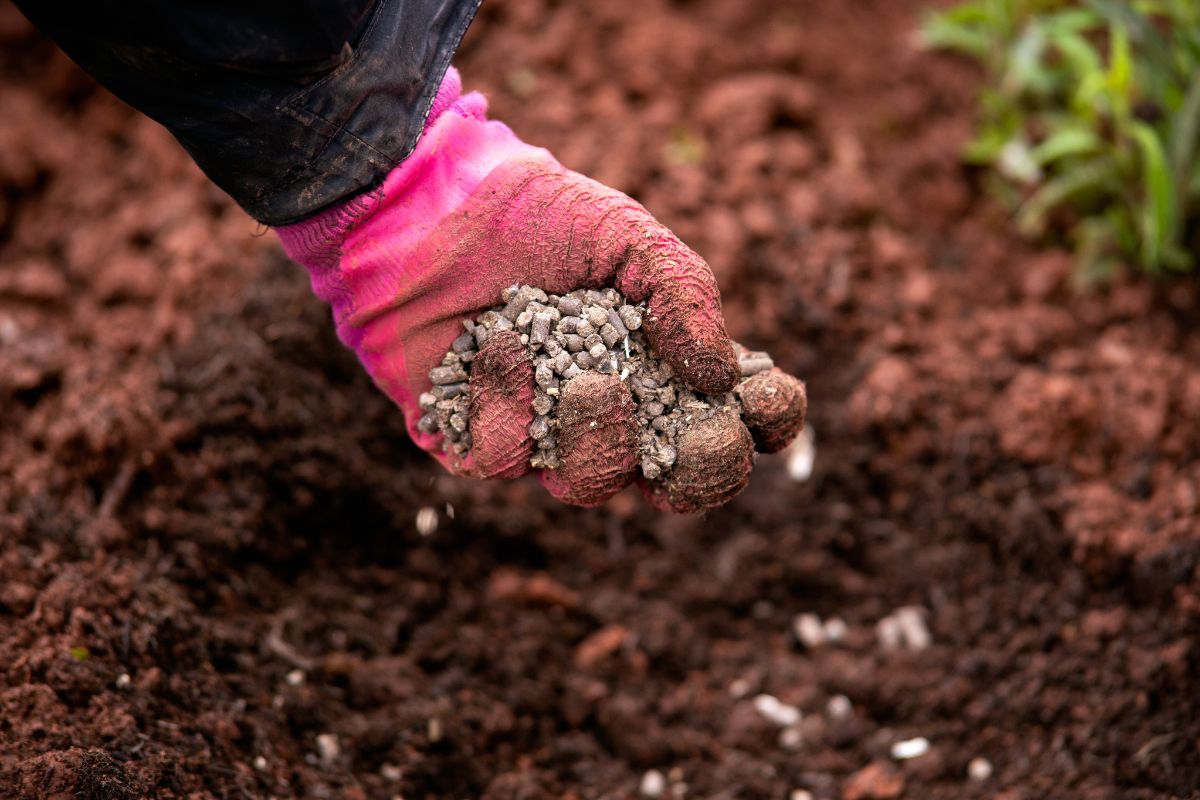Laying down mulch over your veggie and flower beds is an excellent way to boost the health of your garden. A thick mulch helps to suppress weeds, improves water retention and keeps early-season temperature swings in check. What's more, using an organic mulch has long-term benefits for soil improvement, adding nutrients and improving soil texture as the materials break down over time.
But there's a pitfall to be aware of when using mulch. If you use a hard and woody material such as sawdust, wood chips, bark or prunings there can be a serious side effect that harms your plants rather than helping them. The potential problem is known as nitrogen drawdown, and here's what it involves.
What is Nitrogen Drawdown?
Most of the woody materials used for mulch are chemically high in carbon but low in nitrogen. In the case of wood chips, for example, there can be up to 400 times as much carbon as nitrogen, and this imbalance has consequences for composting.
The microorganisms that compost the mulch need plenty of nitrogen to break down the carbon-based materials, and when there's little or none available in the mulch itself, they'll get it from the soil below.
This means that the soil's available nitrogen can become tied up by the quickly multiplying bacteria and fungi, leaving less - or even none - for nearby plant roots to take up. This is the nitrogen drawdown effect, and the lack of the essential nutrient can slow down plant growth, turn leaves yellow and sickly, and even kill off a plant in extreme cases.
But while nitrogen drawdown can certainly be a serious problem, there's no reason to avoid using woody mulch materials if you have them to hand.
The drawdown effect only occurs in the area where the soil and the mulch meet, so it won't cause problems for well-established trees and shrubs with deep root systems. What's more, the limited range of the effect means it's fairly easy to protect more vulnerable shallow-rooted plants if you take a bit of extra care when applying the mulch.
Dealing with Nitrogen Drawdown
If you see the symptoms of nitrogen deficiency after mulching and suspect drawdown is the culprit, then a quick feed with a nitrogen-rich fertiliser can provide an effective solution. Ideally, clear a little of the mulch around affected plants so that the feed is applied directly to the depleted soil rather than simply feeding the composting organisms.
But as with most gardening problems, prevention is better than cure. There are three main ways of reducing or preventing the drawdown effect while still enjoying the benefits of a long-lasting woody mulch.
Firstly, you could let the woody materials age and partially break down before using them as mulch so that much of the carbon-digesting effect has already been done. Keeping two compost heaps can be useful for this, with one reserved for coarser, woodier material which can be transferred to a more general heap once it's aged and well on the path to decomposition.
Secondly, you could apply woody mulch only to areas around established plants or ones with fast-growing deep roots. For plants with roots nearer the surface such as vegetables and soft-leaved herbs, using a less woody alternative that’s higher in nitrogen, such as lucerne or pea straw, is a good option. While it may be tempting to use a nitrogen-rich fresh mulch like grass clippings to ensure there's plenty of nitrogen available, you risk spreading weeds and disease around your garden without the sterilising effect of a compost heap's heat.
Lastly, the best long-term solution is to use a two-layered approach to your mulching. Start with a 1cm to 2cm layer of well-rotted manure, pelleted chicken manure or rich homemade compost, followed by a thicker layer of woody mulch. The lower section creates a nitrogen-rich buffer between the soil and the composting organisms, stopping them drawing the nutrient up from the underlying earth and therefore leaving more for your plants.
This technique is also a highly effective way of managing ongoing soil improvement. Adding the first layer gives an instant boost to nutrient levels, benefiting your plants in the early growing season, while the slow decomposition of the woody material gives a drip feed of nutrients while also working to improve soil texture over time. And once the woody layer has finished composting down, all the nitrogen used in the process will be returned to the soil in time to feed next year's plants.
This two-layer approach takes a little extra work and means sourcing two separate kinds of materials. But the benefits it provides to your plants and soil while avoiding the risks of nitrogen drawdown means it's an extra step that's well worth taking.









